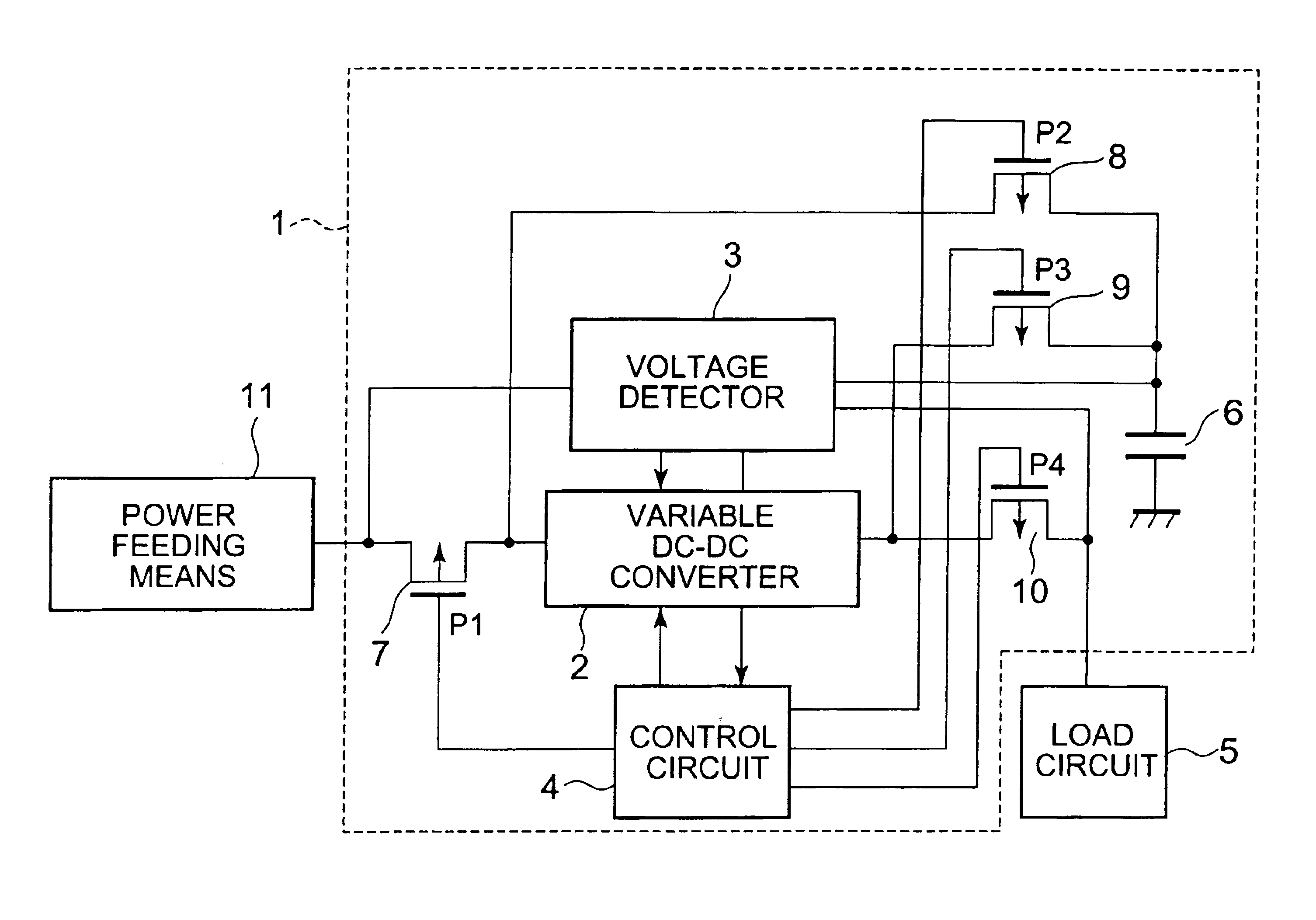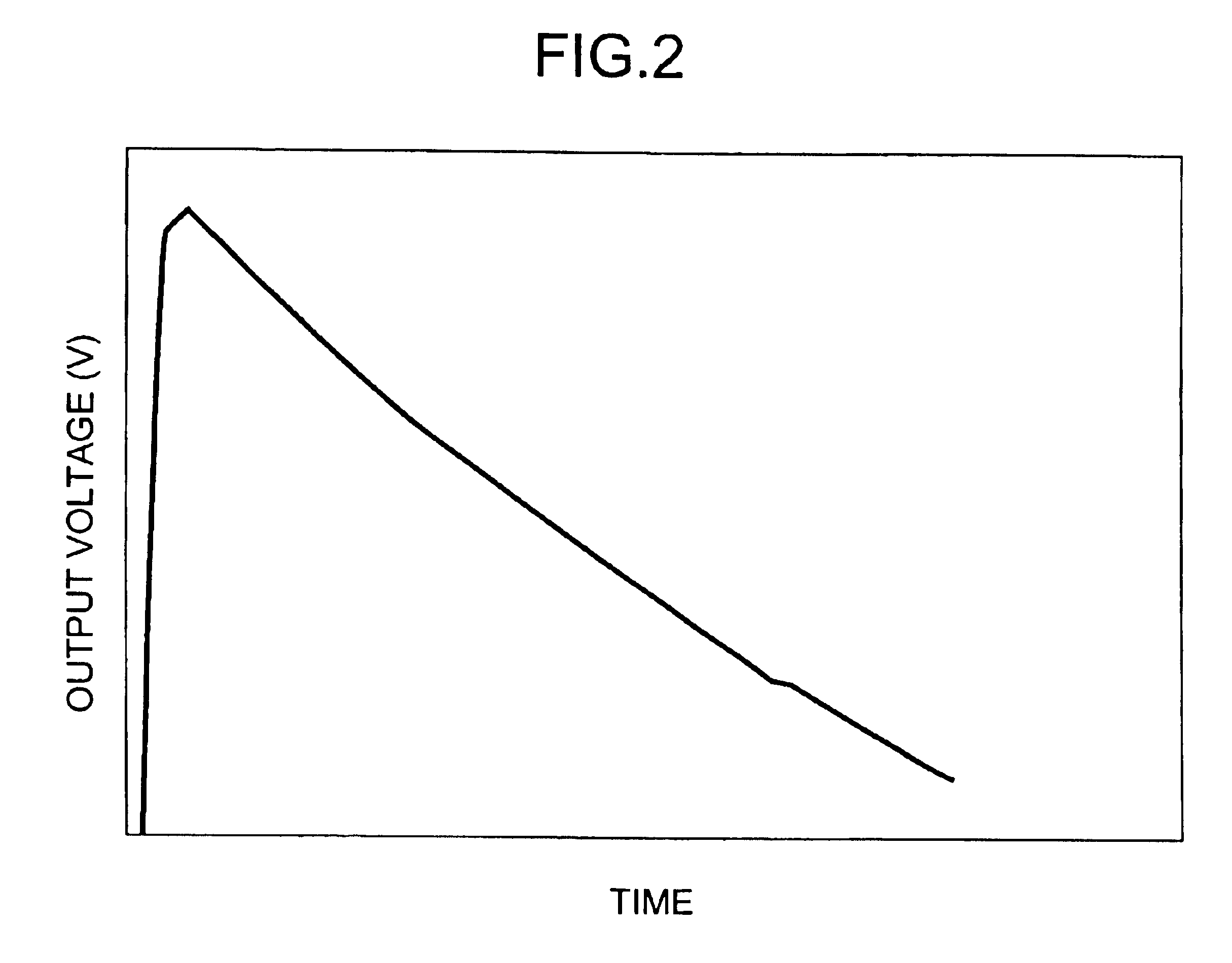Power source inverter circuit
a technology of inverter circuit and power source, which is applied in the direction of power conversion system, dc-dc conversion, instruments, etc., can solve the problems of slow rise of the voltage of the storage means, inability to charge, and extremely long activation time, so as to achieve efficient use of electric power
- Summary
- Abstract
- Description
- Claims
- Application Information
AI Technical Summary
Benefits of technology
Problems solved by technology
Method used
Image
Examples
Embodiment Construction
Referring to the accompanying drawings, a detailed description will be given below on embodiments of a power source inverter circuit according to the present invention. A power source inverter circuit of this embodiment is for use in a portable instrument having as power feeding means a solar module, a thermoelectric conversion element, or a generator using a motor, which generates electric power varying in voltage and amount depending on environment and time, and aims at efficiently storing electric power generated and consuming the electric power with efficiency.
FIG. 1 is a block diagram showing an outline of a structure of a power source inverter circuit 1 according to this embodiment. The power source inverter circuit 1 of the present invention is composed of: a variable DC—DC converter 2 for raising or dropping the voltage of electric power which is supplied from power feeding means 11; a capacitor 6 for storing electric power whose voltage has been boosted or dropped by the va...
PUM
 Login to View More
Login to View More Abstract
Description
Claims
Application Information
 Login to View More
Login to View More - R&D
- Intellectual Property
- Life Sciences
- Materials
- Tech Scout
- Unparalleled Data Quality
- Higher Quality Content
- 60% Fewer Hallucinations
Browse by: Latest US Patents, China's latest patents, Technical Efficacy Thesaurus, Application Domain, Technology Topic, Popular Technical Reports.
© 2025 PatSnap. All rights reserved.Legal|Privacy policy|Modern Slavery Act Transparency Statement|Sitemap|About US| Contact US: help@patsnap.com



